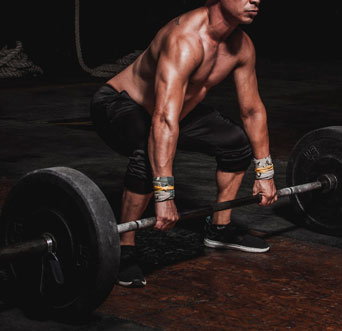Cycling is often associated with cardiovascular fitness and endurance, but it’s also a fantastic way to build strength and power.
Whether you’re a casual rider or an avid cyclist, incorporating strength training into your cycling routine can enhance your performance, prevent injuries, and elevate your overall fitness level.
In this article, we’ll explore how cycling can help you build strength and provide tips on how to make the most of it.
The Role of Cycling in Strength Building
- Leg Muscles: Cycling primarily targets the muscles in your legs, including the quadriceps, hamstrings, calves, and glutes. The repeated pedaling motion helps develop these muscle groups over time.
- Core Stability: Maintaining balance and proper posture on the bike engages your core muscles. A strong core is essential for efficient pedaling and preventing lower back pain.
- Endurance: Long-distance rides and hill climbs require muscular endurance. As you push through these challenges, your muscles adapt and become more resilient.
- Cardiovascular Health: Cycling raises your heart rate, improving cardiovascular fitness, which complements strength training by enhancing blood flow to working muscles.
Tips for Cycling to Build Strength
- Choose Challenging Routes: Incorporate hilly terrain into your rides to engage your leg muscles more intensively. Climbing hills can build muscular strength and power.
- Interval Training: Add interval workouts to your routine, alternating between high-intensity efforts and recovery periods. This simulates strength training by pushing your muscles to work harder during intense segments.
- Resistance Training: Invest in a bike trainer or stationary bike with resistance settings. These tools allow you to simulate uphill riding and provide a controlled environment for strength-building workouts.
- Maintain Proper Form: Focus on maintaining a steady pedal stroke, keeping your core engaged, and distributing your effort evenly between both legs to prevent muscle imbalances.
- Include Strength Training Off the Bike: Off-bike strength training exercises, such as squats, lunges, and deadlifts, can complement your cycling efforts by targeting specific muscle groups.
- Rest and Recovery: Allow time for your muscles to recover after intense rides. Rest is crucial for muscle repair and growth.
- Nutrition: Consume a balanced diet rich in protein to support muscle recovery and growth.
Benefits of Combining Strength and Cycling
- Enhanced Performance: Stronger muscles improve your ability to generate power on the bike, allowing you to cycle faster and tackle challenging terrains.
- Injury Prevention: Strong muscles provide stability and reduce the risk of overuse injuries, especially in the knees and lower back.
- Increased Metabolism: Muscle tissue burns more calories at rest than fat, helping with weight management.
- Overall Fitness: Cycling for strength offers a well-rounded fitness experience that combines cardiovascular health with muscular strength and endurance.
Conclusion
Cycling is not just a means of transportation or a way to boost cardiovascular fitness; it can also serve as an effective tool for building strength and power.
By incorporating challenging routes, interval training, and resistance workouts, you can develop strong leg muscles, core stability, and overall fitness.
Remember to prioritize proper form, rest, and nutrition to maximize the benefits of cycling for strength.
Whether you’re a beginner or an experienced cyclist, harness the potential of cycling to enhance your physical strength and elevate your cycling performance.




